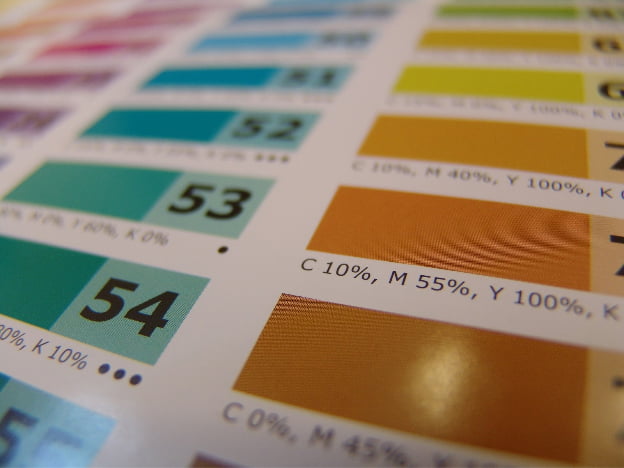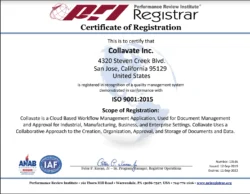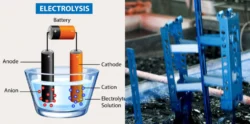Was there an instance when you had your product delivered, but upon looking at it, it’s slightly different from what you pictured? That can be because of the discrepancies in the color that led to a rather disappointing outcome. This is a typical problem when there are problems with how color management is implemented in the workflow.
In this article, we’ll share concrete steps you should undertake to prevent the above instance and save on time and resources.
Table of Contents
But before that, let’s have a briefing on what color management is all about.
Defining Color Management
Color management refers to the checking and assessment of color quality and production across various media. Since colors are inextricably linked to brand consistency, color management should be incorporated in the quality control procedures of businesses.
A color management system pushes properties at an optimum level across devices. It does this by establishing a standard that makes it possible to check each data’s color characteristics.
Issues with Colors
As an entrepreneur, you wish you had the idea and quality in mind to reflect on the final product. Throughout the stages in the workflow, we usually assume that colors and designs remain the same. But in reality, there is subtle variance since different devices reproduce colors in different ways.
Here is the catch. Output devices, displays, and inputs don’t consistently interpret color. While screens, scanners, and cameras use the RGB color scheme, most printers reproduce the same material displayed and inputted using CMYK inks. That means devices read the same data differently, even if it’s used throughout the process.
For industries such as textile, printing, video, film, and prepress, color management has been a significant roadblock. Thus, the International Color Consortium (ICC) was organized in 1993. It aims to create a unifying color scheme solution that all stakeholders and proponents can follow and, therefore, resolving different views.
The ICC then provided a color management system that is applicable across all devices and software. It devised a strategy of ensuring that color characteristics are maintained as much as possible through a standard for cross-platform formatting.
Proponents can now use the color management framework developed by ICC to display, organize, retrieve, convert, support, and send color information across devices. This is possible with the framework’s integration into the software. That allows the optimum reproduction from input to output with a slight difference in information and quality loss.
Moreover, businesses gearing for professionalism in every component and level should implement a strict color management system. If there are too many discrepancies in unsatisfying products, that leads to a reputation that don’t represent the brand.
There is also the need for an intelligent color management system for any device designed to reproduce color needs. That is to ensure that the results retain the color as close as possible to how the proponents visualized it. Regardless of how advanced the system is, however, there is no guarantee of identical color reproduction. That means proponents can only achieve 99% color retention.
Color Management for Designers
Before being finalized into the products you see in the malls or markets, fabrics first undergo the coloration process, which includes coating, dyeing, and printing. Whether the kind of fiber is synthetic or natural, the application of the said techniques will vary. The textile sector, just like other industries, however, is susceptible to color irregularities and discrepancies. This spells the need for an effective and efficient color management system.
Here are some of the proven strategies you can apply to do just that. Take note. These are based on case studies of businesses involved across various niches, including textiles.
1. Decide which colors to use
To identify the colors you want to use for the new design, you can use a spectrophotometer. To make the identification process much easier, you should have a digital library of brand colors, including those you’ve applied previously. That will also make it easier to locate similar shades. Moreover, it will save you from a lot of headaches as you can save a lot of money and time for asking new color matches from the source, although you can locate one that’s closely matched in the database of your company.
2. Communicate with Suppliers
You will be provided a digital copy of the request and the guidelines and standards to follow once you decide on the color palette for the product. There are two things suppliers can do once you send your request. They can assess or gauge if there is a need to recreate the colors or designs you are requesting. If not, the suppliers will look for a match in their inventory.
Fabric mills will be left guessing which color standard they have to reproduce if there is no color management system in place. Consequently, they will have to dye fabric on a trial and error basis, which is an unwise and impractical thing to do. If not, they will have to match those you’ve requested by reformulating colors. Again, that takes a lot of resources that could have otherwise been used to scale the production.
So what do you have to do? You can start by searching for other suppliers who offer the same style and color of textiles you’re looking for. Of course, you don’t have to do that manually as there may be some errors. It’s best to leverage on tools like Frontier’s advanced AI engine. With that in place, you don’t have to wait for your chosen textile factory to generate the desired fabric.
The Frontier platform can find suppliers marketing the same fabric on the platform as well as looking for the exact Pantone colors. This increases the accuracy of your company’s color management workflow. It also reduces delays so you can consistently deliver the items to your target outlets or markets.
Here is the thing. Communication with suppliers, especially in the textile industry is of paramount importance. Thankfully, tools such as Frontier offer crucial assistance, especially for newbie sellers in the industry.
3. Ensure quality control
Quality control is a critical stage or consideration in every form of product development. That is to ensure that the items to be marketed meet the company’s guidelines and standards and to ensure quality customer experience.
That is why designs will first undergo prototyping measures to address any differences and make sure these are within the tolerable range. After that, they can then be mass-produced and marketed. But make sure the discrepancies are settled before sending the physical samples. In that way, you’ll dramatically reduce unwarranted resource consumption, especially when feedback and approvals can be done digitally.
However, it’s imperative to have standard color management to ensure the consistency of the products based on how you envisioned them. This holds especially true, given that color visualization is highly subjective. Once the prototype products pass the set criteria and standards, the fabric mills can then give the signal for the mass production stage.
Discrepancies in color visualization between the fabric mills design and that of your company significantly lessen with the help of a color management system. That ensures optimum reproduction from the inception phase to the production stage. As a result, the mills create the product that is consistent with the expectations of both the business and the customers.
By integrating digitized systems that expedite and automate processes, the processing of fabric and manufacturing becomes more efficient. Proponents can likewise improve the workflow through a more convenient procurement process, quicker supplier searches, and seamless collaborations. That is when they utilize tools such as Frontier, which has a cloud-based and advanced solution with integrated AI features.
All the above factors are critical in ensuring quality control that will satisfy both the business and the customers.
Color Management System for Fabric Mills
Those who have been running mills know the hustles and bustles involved, especially when there are mismatches with what the business owner visualizes. Thankfully, there are tools like Frontier, a digital library where proponents can upload their items’ swatches. It also makes it easier for the designers to communicate with the best team as it can automatically detect the Pantone colors reflected on every digital swatch in its library.
The Frontier cloud-based platform allows you to easily upload your fabric swatches’ images with high precision and accuracy. Sure, there is variance in terms of designs, colors, and patterns among the samples. With advanced AI technology, Frontier can consistently reproduce each tinge of color on the fabric without losing information. This is possible because the tool can accurately record the color information on the swatches while keeping them for use in the future.
Concluding Points
Color consistency is fundamental for every successful branding. That is where the role of color management comes to play. Think about this. Suppliers and designers sometimes use varying color systems resulting in discrepancies between the expected output and the original design. With a color management system, proponents can agree on a color system that will standardize the outputs and inputs across different devices.
To develop or improve an existing color management system for your business, you can leverage tools like Frontier.
ABOUT THE AUTHOR
Patrick Panuncillon is a digital marketing expert who has been helping businesses involved in the textile industry boost their online visibility. He loves to dabble with the latest marketing trends and innovations.
Image Source: Pixabay




